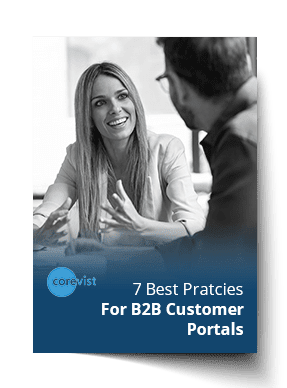Share
Author
George Anderson
Share
No doubt about it, SAP customer order portals present unique challenges—particularly for manufacturers. All business data and logic lives in SAP ERP, yet customers need to access it through an intuitive web portal.
How do you create the customer experience? What challenges stand in the way?
Here are the top three challenges we see in customer order portals (and how to address them).
1. Your customer order portal shows out-of-date information
Whether your customer portal supports online ordering or just invoice and order tracking, one thing’s for sure: Customers need accurate data.
In fact, they need quite a bit of information in the portal. And since all of that data lives in your SAP ERP system, the portal should provide a top-notch customer experience by showing that data in real time.
Here’s what customers typically need in a B2B order portal.
- Real-time product availability. Even if you don’t allow online ordering, you should show real-time inventory in the portal so customers can do a quick price and availability check.
- Real-time pricing driven by contract and product rules. Again, even if customers can’t place orders in the portal, you should allow them to check their personalized pricing for an SKU.
- Real-time order posting from the portal to SAP so customers have confidence that they’ve completed the transaction. If they have to call customer service to make sure their order went through, then the portal isn’t doing its job.
- Full order history and real-time order status from SAP so customers can get order updates without calling customer service.
- Full invoice history and real-time status for credit and invoices so customers can monitor their account standing.
- Self-service online payments so customers can keep their accounts in good standing without paper-based workflows.
This is just a high-level overview of the functionality that customers need in a B2B order portal.
If the portal doesn’t reflect the customer’s account data and logic in real time, they’ll lose confidence in the solution. If customers can’t trust the portal, they’ll still have to call or email customer service to do business with you. At that point, the order portal is failing both you and your customers.
The solution here is to choose a customer order portal that includes real-time SAP integration.
FREE whitepaper
7 Best Practices For B2B Customer Portals
Start with a goal of reducing phone, fax, and email inquiries—and put the voice of the customer first. But don’t create more work for IT.
2. Your customer portal architecture is difficult for IT to support
Some organizations have a customer order portal that (usually) displays up-to-date information from SAP ERP. However, if the portal architecture involves middleware or a connector (rather than direct integration), it’s often challenging to support that ongoing data maintenance. Your IT team has to maintain all relevant business rules in three places (SAP, middleware, and customer portal), and you’ll have to keep all three systems synchronized.
The alternative approach is a customer order portal that’s built on a real-time SAP integration. (Hint: That’s how Corevist Commerce is architected.)
3. Your customer portal solution doesn’t support easy spinoff sites
Not every organization needs more than one customer portal experience. If you only sell in one geography, or if you have only one brand or product line, then a single portal is sufficient.
But what if you have multiple geographies?
Or different brands that are sold to different customers speaking different languages?
How about when your company acquires a new product line and you need to maintain a separate experience and brand presence?
In all these cases, most customer portal solutions will require you to launch separate instances, each with their own custom SAP ERP integration. Maybe you can justify it if you have to do that once or twice. But if you scale beyond that, it’s not a good use of resources.
The key is to find a customer portal solution (like Corevist Commerce) that allows you to reuse your infrastructure investment for an unlimited number of spinoff sites. This way, you can build a flagship customer order portal for the brand or geography that has the most reusability in terms of business logic. After launching your flagship site, you can launch multiple spinoff sites with minimal additional effort that leverage your existing SAP integration.
FREE whitepaper
7 Best Practices For B2B Customer Portals
Start with a goal of reducing phone, fax, and email inquiries—and put the voice of the customer first. But don’t create more work for IT.










